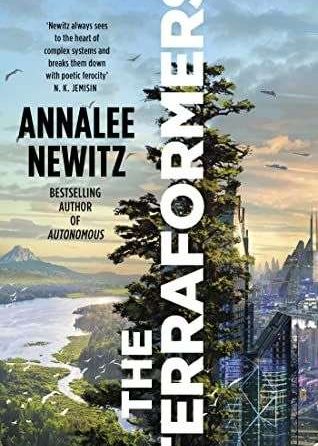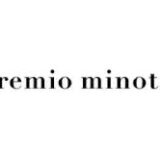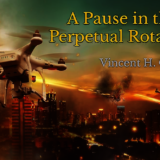Just to be clear, I have been a huge fan of Tolkien’s work for decades. I’ve read The Lord of the Rings and The Hobbit at least two dozen times, listened to the BBC adaptions of those works half-a-dozen times, and listened to the audio books twice. I’ve also read The Silmarillion and Unfinished Tales probaby three or four times each. And I saw The Lord of the Rings movies twice and will of course see the Hobbit trilogy at the individual films come out.
Even so, due to some changes in my life (which are not important here), I’ve gradually come to conclude that there are elements of Tolkien’s work that are distasteful, specifically his view of race, which smacks of the highly racist attitudes of the earIy 20th century. As such, I believe that Tolkien needs to be read (and listened to and watched) with a mental reminder that race doesn’t work in the real world like it does in Middle Earth.
Racism in Middle Earth
Before going any further, let’s define racism. To quote Wikipedia, racism is the “belief that human populations are divided into separate races [and] that some races are inferior to others.” This belief is usually accompanied by irrational fear and horror at the idea of miscegenation, which is the mixing of different racial groups through intermarriage and interbreeding.
As defined above, Middle Earth is a very racist world indeed.
In Middle Earth, for example, the best and most noble races of Man are the light-skinned Numenoreans and Riders of Rohan while the “swarthy” (i.e. dark-skinned) race of the Dunlendings are little better than the Orcs they fight alongside. Worst of all are the humans of Far Harad, whom Tolkien describes as “black men like half-trolls with white eyes and red tongues” — a description that could be lifted right out of a skinhead screed.
Similarly, in Middle Earth, racial mixing even among humans is seen as distasteful. The Gondorians, for instance, are obsessed with maintaining the racial purity of the Numenorean bloodlines. When Faramir proposes marriage even to the light-skinned Eowyn of Rohan, there’s a question of whether the “proud folk” of Gondor (as Eowyn puts it) would be willing to accept the union. One wonders what Faramir’s countrymen might say if Faramir had proposed marriage to a woman of Far Harad!
This essentially racist view of humanity extends itself to the other humanoid races in Middle Earth. In that world, races live in segregated communities, and one’s race predetermines one’s behavior. Putting Ents aside, the four “good” races (Humans, Dwarves, Elves and Hobbits) are all light-skinned, while the evil races Orcs and Trolls are dark-skinned, even though as light-shunning cave-dwellers they could easily have been written as albino.
Racial mixing among the humanoid races is clearly discouraged. Elves who marry Humans, for example, are clearly considered to have “married down.” Similarly, Saruman’s interbreeding of (comparatively) light-skinned Humans with dark-skinned Orcs is viewed as a “great evil.” Other racial mixes and resulting hybrids, such as. Human/Hobbit or Human/Dwarf, etc., are not mentioned, while an Elf/Hobbit hybrid is clearly stated (in The Hobbit) as being “absurd.”
Racism and the World War I Generation
I believe that Tolkien’s creation of an essentially racist world emerges naturally out of early 20th century conceptions of race.
In Tolkien’s generation, the inherent superiority of the light-skinned races over dark-skinned races was considered “scientific fact.” As late as the 1930s, “science” books positioned black people as less evolved than white people. For example, the first edition of the quite popular book The Earth for Sam (an introduction to paleontology for children) states that the “white primate” is the pinnacle of evolution.

As a general rule, Tolkien’s generation viewed miscegenation with a peculiar and almost fanatical horror. The world’s first blockbuster movie was released when Tolkien was a teenager. It was The Birth of a Nation (1915) whose plot depicted the KKK as heroes defending white women against sexually aggressive black men played (not coincidentally) by white actors in blackface. The ideas behind that movie were so uncontroversial at the time that even Woodrow Wilson was an avid fan of the film.
In Internet discussions of the racist element in Tolkien’s work, the most popular justification appears to be (I’ll paraphrase) that “Tolkien based Middle Earth on medieval Europe and therefore it just reflects the racism of that period.” In fact, the medieval period in Europe is not at all characterized by the notion that certain races were superior or inferior.
What people of the Medieval period thought important was your religion, not the color of your skin. Slavery existed, but it was based upon circumstance (like being captured in war) rather than race. In fact, it wasn’t until the discovery of the New World that the concepts of slavery and race became intertwined, creating the kind of racist thinking that continued to be mainstream thinking until a few decades ago.
Tolkien’s decision to create a world where race was supremely important (as opposed to say, culture or technology) emerged, not from the period in history he was imitating, but from creative decisions that reflect the racial prejudices of his generation. Given the fact that Tolkien’s father was South African and Tolkien was himself born in South Africa, it would be surprising if there weren’t racism in Tolkien’s writings.
By the end of the 20th century, however, racism was no long mainstream and thus less likely to show up in fantastic literature. For example, in the Harry Potter series, Rowling relegates the obsession with “racial purity” and miscegenation to the evil Malfoy family and similar ilk. While Muggles are clearly inferior to wizardsly folk, such folk can and do appear inside Muggle families.
Tolkien in the 21st Century
The racism in Tolkien’s work is important because people draw conclusions about how the real world works based upon the fiction that they read, hear and see. A perfect example of this is Gone With the Wind (another book I’ve read a dozen times), which successfully promoted a revisionist view of the civil war and the reconstruction that undoubtedly contributed to the public acceptance of Jim Crow laws.
In the case of Tolkien’s work, the influence is more diffuse. Even so, I note that skinhead racists in the U.S. frequently draw inspiration and justification from the popular notions of Medieval Europe promulgated in the fantasy genre. (They, like Tolkien, seem inordinately fond of Celts and Vikings.) A better test, though, of the impact of fictional racism (even in a fantasy setting) is simply to imagine how a young black person might react to reading that fiction and its hundreds of imitators.
It’s not hard to imagine that a black child might be uncomfortable reading a book where all the dark-skinned characters are evil and all the light-skinned one are good. Even worse, what if the child simply accepts and integrates that racist thinking in his or her view of the world?
In fact, that’s what appears to have happened in our own popular culture. Young children of all races, when shown illustrations of children that are identical except for skin color, tend to characterize the dark-skinned ones as “mean” and “bad” and the light-skinned ones as “friendly” and “good.” None of this is surprising in a world where even Disney’s “black” princess is distinctly cafe-au-lait.
Do I think that this a reason to boycott Tolkien’s books or the movies based on them? Absolutely not. However, I do believe that it’s the responsibility of readers and moviegoers alike to be aware of the inherent racism in Tolkien’s work and make a conscious effort not to transfer that racism into their own perception of our own world.











I enjoyed reading this article.
I would not call myself a Tolkien fan though I find the stories of Middle earth interesting. I enjoy reading articles and fanfiction, discussing or based on his works, that challenges the ideas of racial superiority and the good/bad in Tolkien’s work. The first time I started taking notice of all the good and bad peoples of midlle earth, I was very uncomfortable and and even more astonished at the arguments presented by those who claimed Tolkien’s works were simply made for Europeans so therefore would likely have no non-white people as the good guys.
Claire, as with any work subjected to literary criticism, Tolkien’s can be looked at in a variety of different ways.
One can gain some additional insight by reading Glyer’s Bandersnatch, which is reviewed elsewhere on the site.